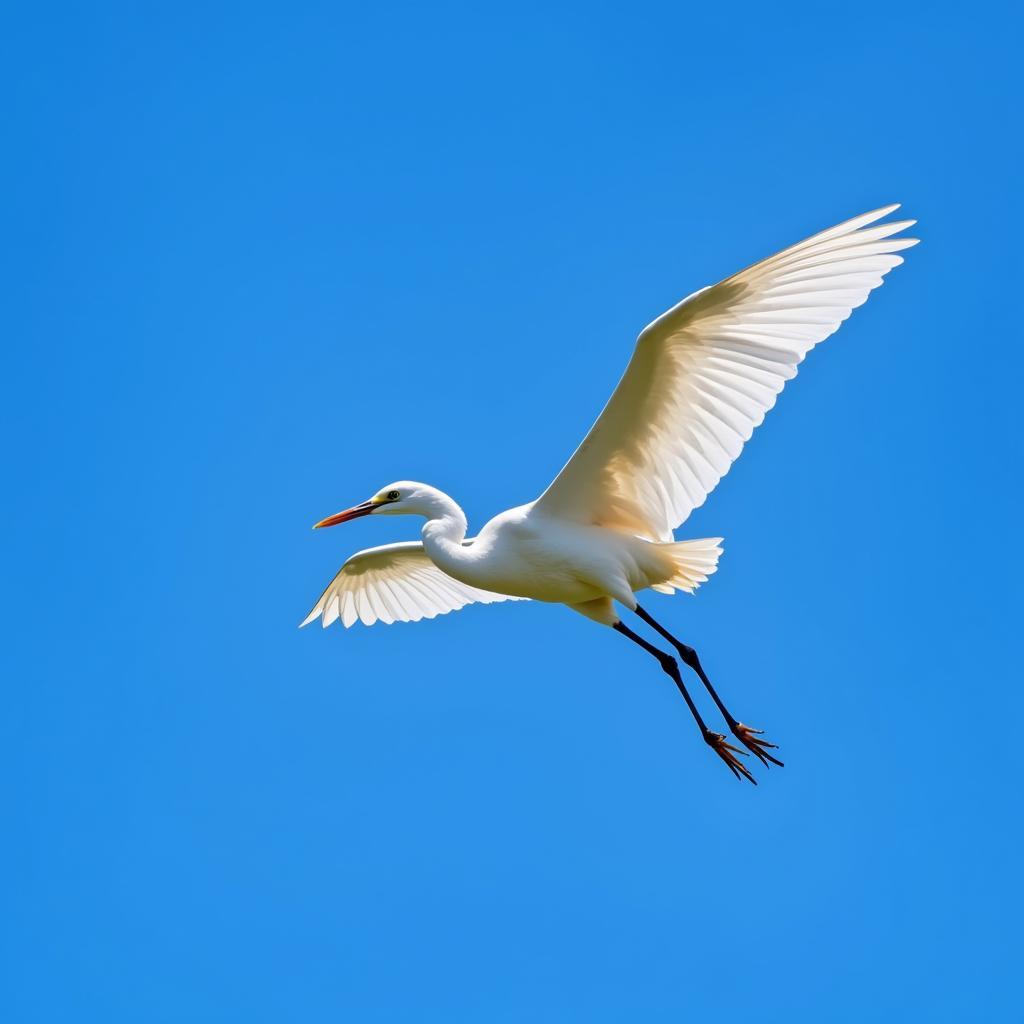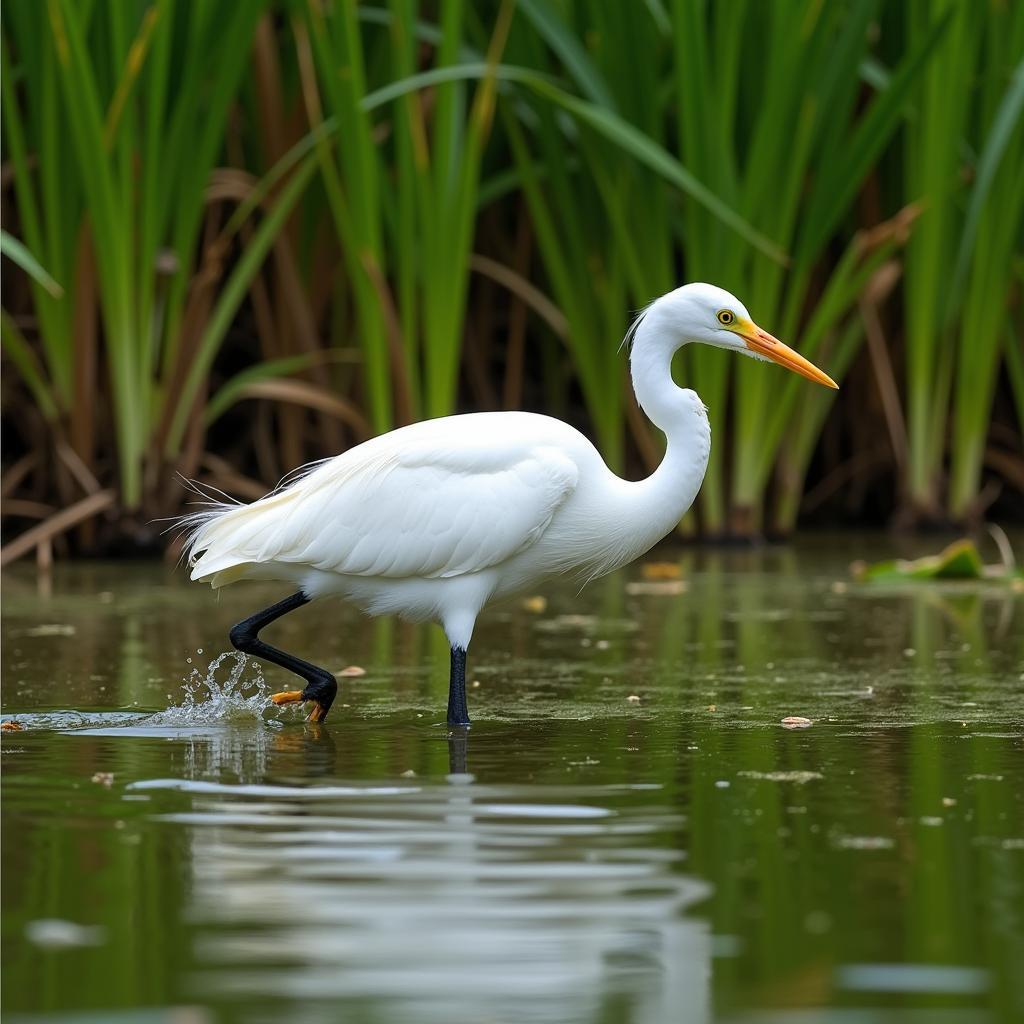The Audubon Society Symbol Bird is instantly recognizable as a symbol of conservation and a love for the natural world. But what bird holds this esteemed position and what does it represent? This article delves into the history of the Audubon Society, exploring the significance of their chosen avian ambassador and its impact on the fight for environmental protection.
 Great Egret in Flight – Audubon Society Symbol
Great Egret in Flight – Audubon Society Symbol
A Legacy Takes Flight: The Story Behind the Symbol
Founded in 1905, the National Audubon Society was born out of a growing concern for the plight of birds across North America. At the turn of the 20th century, feathered creatures were being hunted at unsustainable rates for their plumes, pushing some species to the brink of extinction. The organization’s namesake, renowned ornithologist and painter John James Audubon, had documented the beauty and diversity of American birds in his iconic work, “The Birds of America,” nearly a century earlier. Inspired by his legacy, the National Audubon Society emerged as a powerful voice for avian protection.
The Great Egret: A Beacon of Resilience and Hope
The bird that’s a symbol of the Audubon Society is the magnificent Great Egret. This choice wasn’t arbitrary. At the time of the organization’s founding, the Great Egret, coveted for its elegant plumes, was facing a dire situation due to excessive hunting for the fashion industry. The society, recognizing the urgency of the egret’s plight, rallied for its protection. Their efforts led to crucial legislation that helped bring the species back from the brink, solidifying the Great Egret as a powerful symbol of conservation success.
 Great Egret in Wetland Habitat
Great Egret in Wetland Habitat
More Than Just a Bird: Symbolism in Action
The Great Egret’s symbolism extends beyond its own species. It embodies the interconnectedness of all living things and the importance of protecting biodiversity. The bird that’s the symbol of the national Audubon Society, with its striking white plumage, also represents purity, peace, and hope – ideals that the organization strives to uphold in its mission. The Audubon Society’s logo, featuring a profile view of the Great Egret in flight, has become a universally recognized symbol of environmental stewardship, reminding us of the power of collective action and the responsibility we share in safeguarding our planet’s precious natural heritage.
Carrying the Torch: The Audubon Society Today
Today, the National Audubon Society continues to be at the forefront of conservation efforts, advocating for birds and their habitats through science-based initiatives, grassroots activism, and educational programs. Their work extends beyond protecting individual species, focusing on addressing broader environmental challenges such as climate change and habitat loss, recognizing the intricate ways in which these issues impact bird populations and the ecosystems they depend on.
The Audubon Society’s Impact: A Legacy of Hope
The National Audubon Society’s impact is undeniable. From advocating for landmark environmental legislation to establishing a vast network of chapters and sanctuaries across the Americas, they’ve played a pivotal role in shaping conservation efforts for over a century. The bird symbol national Audubon Society, the Great Egret, serves as a constant reminder of their victories and the ongoing fight to protect our planet’s biodiversity.
 Audubon Society Volunteers Participating in Habitat Restoration
Audubon Society Volunteers Participating in Habitat Restoration
By understanding the story behind the bird that’s a symbol of audubon society, we gain a deeper appreciation for the organization’s legacy and the importance of their mission. The Great Egret, once a symbol of exploitation, now embodies hope, resilience, and the power of collective action. Its presence on the Audubon Society’s logo serves as a call to action, urging us to become stewards of the natural world and protect the delicate balance of life on Earth.